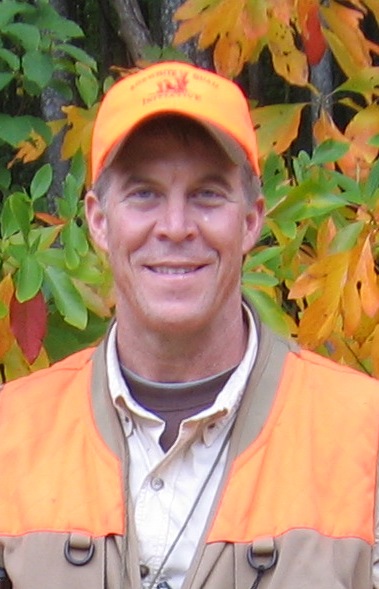STRENGTHS AND LIMITATIONS
Man’s got to know his limitations…
–Clint Eastwood, Magnum Force, 1973
The eastern states’ wild bobwhites have been declining for years, while the western states were riding high. No longer; now we’re all suffering together.
The current ebb in western wild quail populations serves a purpose by raising the public profile of the plight of bobwhites, not just in Texas and Oklahoma, but across the country. Widespread attention to the overall bobwhite problem is long overdue, but the acute concerns about western quail are shining a brighter light on questions about what, if anything, to do differently.
At a recent wildlife convention, a flyer for a seminar entitled “Extreme White-tail Management” caught my attention. Even as I pondered the state of contemporary deer management, I began to wonder if the same concept might – or already does – apply to bobwhites. Such thinking has helped me better frame and clarify the NBCI’s national leadership role in bobwhite conservation, including the current western quail situation.
Please allow me to provide brief context for bobwhite conservation and the NBCI. The state fish and wildlife agencies have the legal authority and stewardship responsibility for wild quail in their respective states. This authority is grounded in the Public Trust Doctrine of wildlife management in North America, which holds that wildlife resources are owned by no one, but are held in trust by government for the benefit of present and future generations of the people. The details of implementation differ among states, but the core theme is the same.
From that doctrine arises the “North American Model of Wildlife Conservation” and its seven primary tenets:
- Wildlife as Public Trust Resources
- Elimination of Markets for Game
- Allocation of Wildlife by Law
- Wildlife Should Only be Killed for a Legitimate Purpose
- Wildlife Are Considered an International Resource
- Science is the Proper Tool for Discharge of Wildlife Policy
- Democracy of Hunting (i.e. hunting opportunity for all)
The NBCI is the 25-state, unified strategic initiative for wild quail restoration, the first-ever collective effort by states to tackle such a large regional challenge for a resident game bird. As an initiative originating from the states, the NBCI is solidly grounded in state authorities – and limitations – as well as the North American Model that generally guides states’ wildlife conservation philosophy and actions. For example, the NBCI vision is to restore wild quail at a landscape scale across its range, so it is once again an abundant public resource (tenet 1) that is widely available (tenet 7) for regulated public hunting (tenet 4).
Further, the NBCI is built on a foundation of science (tenet 6) which, fortunately, is exceptionally broad and deep for bobwhites. The scientific consensus is that – summarized across the species’ range – landscape-scale habitat degradation over decades is the root of the long-term population decline. Thus, the NBCI is designed and geared to address the range-wide bobwhite problem at its source – by instigating large-scale, strategic habitat restoration on croplands, grazing lands, forest lands, mining lands, etc. Habitat restoration is long-term, tedious and frustrating work, constrained by scale, economics, land ownership patterns, and perpetually inadequate budgets and personnel. If and when the scientific consensus changes regarding the big picture of bobwhite ecology and limiting factors, the NBCI will adapt and evolve appropriately.
The NBCI’s state-based authority and structure are sources of the Initiative’s strengths, as well as its limitations. The core strength of the NBCI’s 25-state alliance and partnerships is the potential power of so many conservation allies to eventually catalyze range-wide positive impacts. No other approach has such large potential. The basic limitation of the NBCI’s state foundation is that state wildlife agencies, like every bureaucracy in the history of the world, can be cumbersome and conservative entities that understandably may try the patience of those seeking immediate and bold action. State agencies must answer to diverse publics with diverse interests, and generally must operate within political, professional and scientific conservation standards that consider societal tolerances and multiple resource needs.
Some private entrepreneurs who love bobwhite hunting are eager to do more, faster. Who among us cannot appreciate that desire? With fewer financial, legal, political, societal or geographic scale constraints than the states and the NBCI, substantial private money is being invested in bobwhite research, management practices and propagation that stretch the limits of traditional public trust-based conservation norms. In the process, new scientific knowledge about bobwhite biology certainly will be acquired.
The NBCI supports scientific inquiry, and values new scientific knowledge about bobwhites. Some of the privately funded research underway may illuminate non-habitat factors that could limit certain populations in certain places, and perhaps could even offer innovative means to increase bobwhite populations on a limited scale.
But just because we may find out we can, does not necessarily mean the states and the NBCI should … or even could. Some of the measures (e.g. predator control, supplemental feeding, etc.) that are being or may be employed by private conservationists to increase local bobwhite populations may not be appropriate or feasible for states or the NBCI at statewide or regional scales. Various important factors such as tenets of the North American Model, states’ financial constraints, logistical barriers such as landscape scales, competing resource demands, societal and political tolerance, conservation partnership implications, risks of unintended consequences, etc. affect the conservation policy decisions of public agencies.
The NBCI is following the science and keeping our eye on the ball at the horizon – staying focused on habitat degradation as the fundamental root cause of the range-wide bobwhite problem. As slow and frustrating as it is to address that reality, the NBCI’s role for the foreseeable future is to provide national leadership, coordination and capacity to catalyze large-scale, strategic restoration of native habitats as the long-term means to restore widespread populations.




